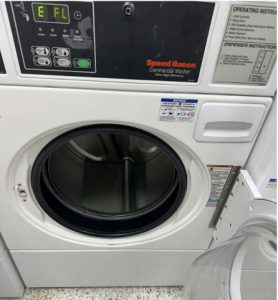The debt crisis: How student debt impacts college graduates
Photo by Blogging Guide on Unsplash
College students across the nation wonder if they can afford a higher education.
Apr 29, 2021
Today, most college students face a similar problem: financing their education. With university prices skyrocketing, students find themselves with empty pockets. While both private and federal loans seem enticing for those at a loss, a looming student debt crisis leaves students questioning how they will pay for college.
In 2019, 69% of college students in the United States took out both private and federal student loans, according to Student Loan Hero. The current student loan debt of all Americans adds up to $1.75 trillion. Ohio residents alone owe $57 billion worth of that debt, making it the state with the seventh largest student loan debt. According to Policy Matters Ohio, many graduates in the state “must choose between making loan payments and paying for other necessities like rent or food.”
Google Trends also reveals that students are uninformed about student loan programs. The second most researched sentence regarding loans on Google is, “What is student debt?” College Avenue reported only 37% of students fully understand the “financial terms” of their loans. This lack of education can further expand the debt crisis. When students do not know how loans operate, they are more likely to accidentally abuse them.
“I wasn’t really provided much information about student loans before college that I remember,” Kaleigh Kotula ‘21 told The Carroll News. “During college, it was the same thing. Not really much information was given to me during my college experience. I am having my first experience with student loans as a graduate student, and I am still confused and unsure about it all. I still do not feel fully informed about student loans and what the differences are between each of them and what they entail.”
“All I knew was that you had to fill out paperwork and have your parents put their information on there because you have no credit yourself to get your own loan,” Aislyn McQueen ‘23 said. “During college I found out that some of the loans offered have crazy high interest rates and could potentially be way more expensive than what you took out in the first place after you graduate.”
Student Loan Hero also states that at the end of their college careers, many students end up with over $29,000 in student loan debt. While the average student initially takes out less than $10,000 worth of loans, the interest quickly adds up.
“Student loans and debt are like a dark and dangerous cloud hanging over your head,” McQueen stated. “Now in the moment it feels like free money. There are no worries. As soon as you graduate though, you get slapped in the face. I think it’s sad that it costs so much to get a good education.”
“With student loans, a big key thing that you’re fighting is the interest rate and time,” Spencer Dieck, financial analyst at Pistone Wealth Advisors, said. “The way that these loans are set up, you really have to make sure you can make some kind of payment because, otherwise, the interest gets to such a level that it compounds and compounds. Now, it’s some beast where, unfortunately, I’ve seen some cases upwards of $500,000.”
The federal student loan interest rate currently sits at 2.75% for undergraduate students. However, private loans have varied interest rates that can reach up to 14.9%. Credible, a finance website, reported that it takes the average person 20 years to pay off their educational debt. Even those taking out less than $7,500 can expect to spend 10 years facing their student loan troubles.
“I understand that educational institutions need to be paid, but it does seem like student loans and debt add additional stressors to students that they really do not need,” Kotula said. “Having now taken out loans for graduate school, I have spent an extensive amount of time working on a budget, trying to figure out what I will be paying from my savings, what I will be using my loan for and how I set myself up for future success by paying my interest monthly. It is a lot to figure out on top of going into a rigorous academic environment that grad school will bring.”
“In retrospect. I think that a lot of people do get screwed in the case of student loans as if their parents are unable to cosign because of the many reasons that wouldn’t allow them, the student has to suffer,” McQueen continued. “I would say because of this the system does take advantage of the economically vulnerable.”
The Institute for Policy Studies says 92% of all student loans are owned by the U.S. Department of Education, meaning that only 8% are owned by private companies. This staggering statistic has created a national outcry for federal student loan forgiveness from the government. President Joe Biden has announced his plan to forgive up to $50,000 worth of federal student loans per person.
According to the Center on Budget and Policy Priorities, these concerns come after the federal government’s higher education budget dropped over $6 billion in 2018 than (or below) what it was a decade prior. State spending for college financing has also fallen 13% per student in Ohio, while university tuition has increased across 41 states by more than 20%.
Yet, there is hope. Along with the current Biden administration’s student loan relief efforts, organizations like Policy Matters Ohio and the American Association of University of Professors are attempting to combat the student loan crisis. These efforts include educational webinars, information coalitions and other comprehensive events about student loans to educate and support students about financing their education.
Dieck also emphasized the importance of mental health when it comes to finance. He explained that while graduating students should get on top of their loans, they don’t need to have all the answers now. He stressed that mistakes happen, especially with money.
“It doesn’t make sense to beat yourself up over the head psychologically, especially when that has an impact on finance.”















